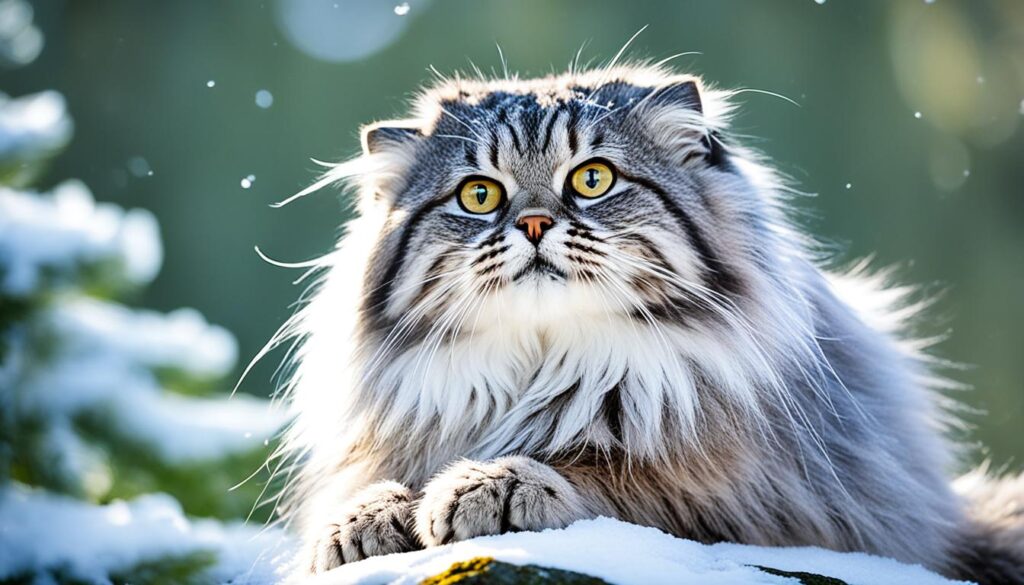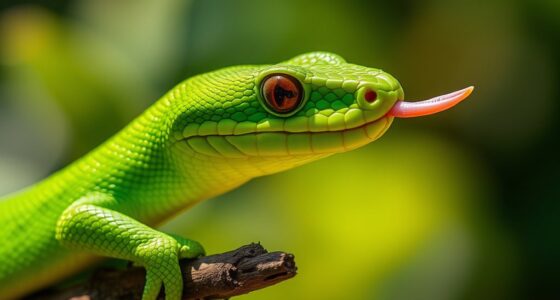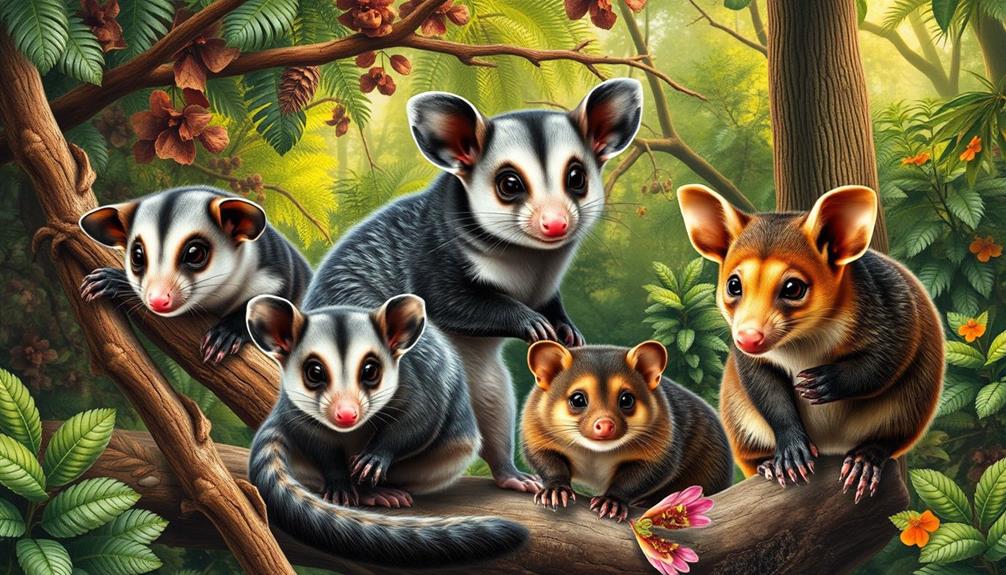Did you realize that cuddly animals have the ability to bring immense happiness and comfort into our lives? Whether it’s the feel of their soft fur or their irresistibly cute looks, these creatures hold a special spot in our hearts. In this article, we will present you with a variety of charming fluffy animals that are certain to warm your heart. From popular pets such as cats and dogs to lesser-known species like Pallas’s cats and red pandas, get prepared to go on a fluffy journey that will leave you beaming.
Key Takeaways:
- Fluffy animals have the power to bring immense joy and comfort to people.
- They come in a variety of species, from domestic pets to rare wild creatures.
- Admiring their soft fur and cute appearances can instantly brighten your day.
- Some well-known fluffy animals include cats, dogs, rabbits, and alpacas.
- Exploring the world of fluffy animals can be a fun and heartwarming experience.
Introducing The World’s Fluffiest Animals
When we think of fluffy animals, cats and dogs often come to mind. However, there are many other furry creatures out there that deserve recognition. Let’s take a closer look at some of the planet’s furriest animals, including the Pallas’s cat, red panda, Arctic fox, English Angora rabbit, Pomeranian, alpaca, snow leopard, chinchilla, black and white ruffed lemur, and baby duck.
https://www.youtube.com/watch?v=R0qW_Tqetnw
These adorable and fluffy animals come in a variety of shapes, sizes, and habitats. From the playful Pomeranian to the majestic snow leopard, each of these creatures has its own unique charm and appeal.
The Fluffiest Animals:
- Pallas’s cat
- Red panda
- Arctic fox
- English Angora rabbit
- Pomeranian
- Alpaca
- Snow leopard
- Chinchilla
- Black and white ruffed lemur
- Baby duck
These fluffy animals have captured the hearts of people worldwide with their soft fur and adorable appearances. Whether you’re a fan of wild cats or domestic pets, there’s no denying the irresistible cuteness of these furry creatures.
Take a moment to appreciate the beauty and charm of the world’s fluffiest animals. Their fluffy coats and endearing personalities bring warmth and joy to our lives.
To learn more about each fluffy animal and discover fascinating facts about their habitats and behavior, continue reading our article. Get ready to be enchanted by the adorable world of soft fur and cuddly critters!
Pallas’s Cat – The Cozy Wild Cat
The Pallas’s cat, also known as the Manul, is a small wild cat with long, dense, pale grey fur. Its low-set, rounded ears and fluffy appearance make it incredibly adorable. Though it may look like a plush toy, this furry critter is a true wild cat.
Distinctive Features
What sets the Pallas’s cat apart is its unique physical characteristics:
- Long, dense, and fluffy pale grey fur
- Low-set, rounded ears
- Short snout
- Stocky, robust body
Habitat and Behavior
Pallas’s cats are native to the grasslands and montane steppe regions of Central Asia. They are well-adapted to cold climates and can be found in countries such as Mongolia, China, Russia, and Kazakhstan. Here are some fascinating facts about their behavior:
- Primarily solitary animals
- Nocturnal hunters, mostly active during dawn and dusk
- Prefer rocky areas and burrows for shelter
- Feast on small mammals, rodents, and birds
- Exceptional climbers, often taking refuge in trees and bushes
Conservation Status
Despite their fluffy appearance, Pallas’s cats face several conservation challenges:
“Due to habitat degradation, loss of prey species, and illegal hunting, Pallas’s cats are classified as Near Threatened by the International Union for Conservation of Nature (IUCN). Efforts are being made to protect their natural habitats and raise awareness about their conservation needs.”
Image featuring a Pallas’s Cat
Here’s an adorable image of a Pallas’s cat for your enjoyment:

A Comparison of Pallas’s Cat and Domestic Cat
| Characteristics | Pallas’s Cat | Domestic Cat |
|---|---|---|
| Size | Small | Small to Medium |
| Fur | Long, dense, pale grey | Varies in length and color |
| Ears | Low-set, rounded | Pointed or folded |
| Habitat | Grasslands and montane steppe | Varies: Domesticated or wild |
| Behavior | Solitary, nocturnal hunter | Varies: Domesticated or wild |
Red Panda – The Furry Bamboo Lover
In the lush forests of the eastern Himalayas and southwest China, a delightful creature roams the treetops, captivating all who lay eyes on it. Introducing the red panda, also known as the lesser panda, a small mammal with a big personality and an undeniable cuteness factor.

The red panda is renowned for its striking appearance, boasting thick reddish-brown fur with contrasting white markings. Its fluffy coat keeps it warm in its mountainous habitat, insulating it against the chilly temperatures.
With its expressive eyes and charming features, the red panda often tempts onlookers to reach out and cuddle it. However, despite its adorable appearance, this little creature is wild and can be dangerous, especially when startled or threatened. It’s best to admire the red panda from a distance, ensuring its safety and preserving its natural behavior.
“The red panda is a unique and endangered species that requires our protection. By respecting their natural habitat and promoting conservation efforts, we can help safeguard the future of these captivating creatures.”
If you’re lucky enough to spot a red panda in the wild or at a reputable conservation center, take a moment to appreciate their beauty and observe their graceful movements. By doing so, you’ll gain a deeper understanding and admiration for this fascinating species.
Arctic Fox – The Fluffy Winter Survivor
The Arctic fox is a fascinating small fox species that calls the Arctic region its home. Known for its adorable appearance, this furry creature boasts a beautiful and fluffy white coat that serves multiple purposes.
Firstly, the Arctic fox’s fluffy white coat provides excellent insulation, helping it withstand the harsh winter conditions of its habitat. The dense fur traps a layer of air close to the fox’s body, creating a natural barrier against the frigid temperatures. This efficient insulation ensures that the fox stays warm, even when the temperatures drop to extreme levels.
Moreover, the fluffy coat of the Arctic fox acts as camouflage in the snowy environment. The white fur allows the fox to blend seamlessly with the icy surroundings, providing it with an advantage when it comes to hunting and eluding predators. This natural adaptation helps keep the Arctic fox safe and hidden in its habitat.
Despite its cute and cuddly appearance, the Arctic fox is a true survivor in the icy wilderness. This adaptable creature has developed unique characteristics that enable it to thrive in one of the harshest environments on Earth. From its fluffy white coat to its impressive hunting skills, the Arctic fox embodies resilience and resourcefulness.

Fascinating Facts about the Arctic Fox:
- The Arctic fox can change the color of its fur with the changing seasons. In the winter, its coat is white to blend in with the snow, while in the summer, its coat turns brown or gray for better camouflage in the tundra.
- These foxes have thick fur on the soles of their feet, providing them with insulation and traction on the ice.
- Arctic foxes are incredibly skilled hunters and will scavenge for food to survive. They can store excess food under the snow for times when prey is scarce.
- Due to the harsh conditions of their habitat, Arctic foxes have a low population density but can occupy vast territories.
Witnessing the beauty and resilience of the Arctic fox in its snowy habitat is a true delight. This fluffy winter survivor serves as a reminder of the incredible diversity of our planet’s wildlife and the adaptability of nature’s creations.
| Distinctive Features | Description |
|---|---|
| Fluffy White Coat | The Arctic fox’s fur is thick, soft, and predominantly white, with variations in color depending on the season. |
| Small Size | Arctic foxes are relatively small, measuring around 18-26 inches in length and weighing between 6-17 pounds. |
| Adaptive Ears | Their ears are rounded and proportionally smaller than those of other fox species, reducing heat loss and maintaining body temperature. |
| Bushy Tail | Arctic foxes have a long, bushy tail that provides balance and warmth, especially during extremely cold weather. |
English Angora Rabbit – The Fluff Ball
The English Angora rabbit is a domestic rabbit breed known for its fluffy fur. Resembling a ball of fluff, these rabbits have long, soft wool that comes in a variety of colors. They are often mistaken for Pekinese dogs due to their fluffy appearance.
English Angora rabbits are gentle and docile pets, making them a popular choice among rabbit enthusiasts. Their soft and luxurious fur requires regular grooming to prevent matting and maintain its fluffiness. Regular brushing and occasional trims are necessary to keep their coats in pristine condition.
These adorable rabbits are not only prized for their fluffy appearance but also for their friendly and social nature. They enjoy human company and can be easily trained with positive reinforcement. Their playful and curious demeanor adds to their charm, making them a delightful addition to any household.
“The English Angora rabbit’s fluffy coat is truly a sight to behold. It’s like cuddling a living cloud!” – Rabbit enthusiast
The Fluff Factor: Comparing English Angora Rabbits
| Feature | English Angora Rabbit | Other Domestic Rabbit Breeds |
|---|---|---|
| Coat Length | Long and fluffy | Varies (short to medium) |
| Coat Texture | Soft wool | Straight or curly fur |
| Appearance | Resembles a ball of fluff | Varies (smooth, sleek, or dense) |
| Grooming Needs | High maintenance | Low to medium maintenance |
| Temperament | Friendly and social | Varies (depends on breed) |
As seen in the table above, the English Angora rabbit stands out with its long and soft wool coat, resembling a ball of fluff. While other domestic rabbit breeds have their own unique qualities, the English Angora’s fur sets it apart, making it a fascinating and delightful companion.

Pomeranian – The Miniature Fluffster
The Pomeranian is a small dog breed that is a miniature relative of the Arctic spitz-type sled dogs. Known for their fluffy fur and loving nature, Pomeranians are a popular choice for pet owners.
With their adorable faces and irresistibly soft coats, Pomeranians bring joy and companionship to their owners. Despite their small size, these fluffy small dog breeds have big personalities and are often described as having a “lion-like” appearance due to their luxurious manes of fur.
“Pomeranians are not only ridiculously cute but also incredibly intelligent and loyal,” says pet expert Dr. Sarah Johnson. “They make excellent companions for individuals or families looking for a small yet spirited dog with a delightful fluffy coat.”
Originally bred in the Pomerania region of Central Europe, Pomeranians were popularized by Queen Victoria, who fell in love with the breed during a visit to Italy. Since then, their popularity has only grown, and they are now celebrated worldwide for their charming personalities and undeniable fluffiness.
Let’s take a closer look at the adorable characteristics of Pomeranians:
- Size: Pomeranians are typically small, weighing between 3 to 7 pounds (1.4 to 3.2 kg).
- Coat: Their double coats consist of a soft, fluffy undercoat and a longer, coarser outer coat. The fur can come in a variety of colors, including orange, red, cream, sable, black, blue, brown, and white.
- Temperament: They are known for being active, alert, and curious. Pomeranians thrive on human companionship and make excellent family pets.
- Trainability: Pomeranians are intelligent and eager to please, which makes them highly trainable. Positive reinforcement methods work best with this breed.
- Maintenance: Due to their long, fluffy coats, Pomeranians require regular grooming to keep their fur clean and tangle-free. Brushing their coats several times a week and scheduling regular visits to a professional groomer are essential to maintain their glamorous appearance.
Comparing Pomeranians to other small dog breeds
| Breed | Size | Coat | Temperament | Trainability | Maintenance |
|---|---|---|---|---|---|
| Pomeranian | Small (3-7 lbs) | Long, fluffy | Active, alert, curious | Highly trainable | Regular grooming |
| Maltese | Small (4-7 lbs) | Long, silky | Gentle, playful | Moderately trainable | Regular grooming |
| Shih Tzu | Small (9-16 lbs) | Long, flowing | Affectionate, friendly | Moderately trainable | Regular grooming |
As you can see from the comparison table above, Pomeranians stand out with their unique combination of small size, fluffy coat, and highly trainable nature.
If you’re looking for a companion that will bring happiness and a touch of fluffiness into your life, a Pomeranian might just be the perfect choice.

Alpaca – The Delightful Fluffy Camelid
When it comes to fluffy animals, alpacas are a true delight. These South American camelids are known for their irresistibly soft and fluffy wool. Domesticated and cherished for their warm fibers, alpacas bring both comfort and charm to the world.
There are different varieties of alpacas, including Suri alpacas and Huacaya alpacas, each with its own unique attributes. However, one thing they all have in common is their fluffy coats, which make them incredibly cuddly and endearing.
Alpaca wool is highly prized for its exceptional quality. It is sought after for its warmth, softness, and hypoallergenic properties. Whether woven into luxurious garments or used for crafting cozy blankets and accessories, alpaca wool is a top choice for those seeking comfort and style.
Alpacas are gentle and sociable animals, making them a joy to be around. They often live in herds and are known for their friendly nature. Spending time with these fluffy creatures can bring a sense of calm and tranquility, as their endearing presence is truly heartwarming.
So, if you ever have the opportunity to encounter an alpaca, be sure to appreciate their fluffy charm and the remarkable wool they provide. These delightful camelids are a true treasure, enriching both our lives and the world of fluffy animals.
Snow Leopard – The Majestic Mountain Fluff
The snow leopard, known as the “ghost of the mountains,” is a magnificent and elusive cat species that roams the rugged landscapes of Central and South Asia. With its striking features and stunning presence, the snow leopard captivates the hearts of wildlife enthusiasts around the world.

This majestic cat is renowned for its beautiful fluffy coat, which serves as both protection and insulation in its frigid alpine habitat. The dense fur keeps the snow leopard warm in the extreme cold, enabling it to thrive in elevations of up to 5,500 meters (18,000 feet).
Adaptations for Survival
The snow leopard’s fluffy coat allows it to blend seamlessly with the snowy terrain, providing excellent camouflage while hunting for prey such as blue sheep and ibex. Its stealth and agility make it a formidable predator, capable of leaping up to 10 meters (33 feet) in a single bound. The snow leopard’s strong legs enable it to traverse steep cliffs and rocky slopes with ease.
Found in 12 countries across Asia, the snow leopard faces significant challenges due to habitat loss, poaching, and climate change. Conservation efforts are crucial in ensuring the survival of this iconic and endangered species.
“The snow leopard’s regal appearance and ethereal beauty make it a symbol of both grace and resilience in the face of adversity.” – Conservationist Jane Goodall
Snow Leopard Facts
| Scientific Name | Panthera uncia |
|---|---|
| Size | Head to tail: 1.3 – 1.5 meters (4.3 – 4.9 feet); Shoulder height: 60 – 70 cm (24 – 28 inches) |
| Weight | Female: 25 – 35 kg (55 – 77 lbs); Male: 45 – 55 kg (99 – 121 lbs) |
| Habitat | Mountainous regions, including the Himalayas and the mountains of Central Asia |
| Diet | Mainly blue sheep and ibex, with occasional smaller prey such as marmots and hares |
| Conservation Status | Endangered |
Despite its elusive nature, the snow leopard continues to inspire awe and fascination. Through concerted conservation efforts and support, we can ensure the preservation of this extraordinary species and its fluffy, majestic beauty for generations to come.
Conclusion: Embrace the Fluffy Cuteness
Fluffy animals have a special way of captivating our hearts with their soft fur and adorable appearances. Whether it’s the wild beauty of the Pallas’s cat or the irresistible charm of domestic pets like Pomeranians and English Angora rabbits, these fluffy creatures bring joy and warmth to our lives. Their cute and cuddly nature is guaranteed to put a smile on your face.
There is something truly enchanting about the fluffy animals that inhabit our world. Their fluffy coats not only provide them with protection and warmth but also make them irresistibly charming. From the majestic snow leopard to the playful Arctic fox, these creatures remind us of the wonders of nature and the incredible diversity of life on our planet.
Next time you encounter a fluffy animal, take a moment to appreciate the cuteness and beauty it brings to the world. Whether it’s a wild creature in its natural habitat or a beloved pet in your home, these adorable beings deserve our admiration and respect. So, let their fluffy fur be a reminder of the joy and happiness that can be found in the presence of these delightful and fluffy creatures.










